(Strand)om Stories: The New Warriors: Classic (vol. 1) Review
Though exchanging some characterization for theming, this volume introduces a brand new team of socially-conscious heroes to the 90s Marvel Universe
—by Nathan on January 3, 2024—
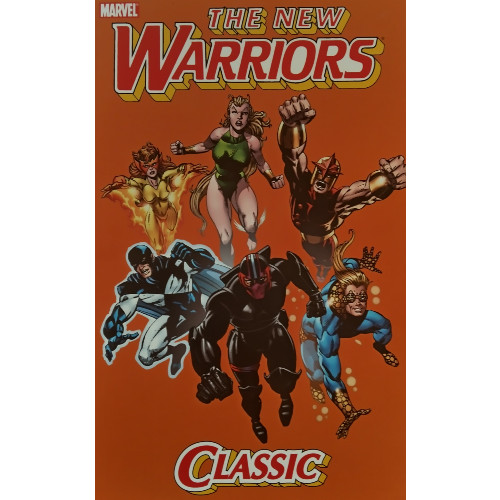
Though only 15 when he was bitten by the radioactive spider which granted him his amazing powers, Spider-Man was not the first teenage superhero. That honor, according to an in-depth piece by Brian Cronin over at Comic Book Resources, goes to a guy named "Marvel Boy," a teenage hero originally appearing in 1940 who learns he has superhuman abilities when he turns 14. Cronin also deliberates whether characters like Captain America or Namor the Sub-Mariner were teenagers when they became heroes, noting Steve Rogers' age isn't exactly defined when he received the super-soldier serum.
Spidey may not have been the first adolescent superhero, but he was among a new wave of teenage characters who weren't relegated to "sidekick" status. Move over, Robin the Boy Wonder, Batgirl, Bucky Barnes, Kid Flash, and Aqualad. Spider-Man answers to nobody!
In the decades since, several younger individuals have donned costumes and capes to assert their own heroic identities. Yes, they may be inspired by older superheroes–Kamala Khan comes to mind–but they're not sidekicks. When Ms. Marvel fights alongside Captain Marvel, it's as her equal, not her subordinate. Johnny Storm was a full-fledged Fantastic Four member from the jump; Kitty Pryde became an X-Man; even the New Mutants were their own team of heroes, not just "Kid X-Men."
At the very end of the 80s, a new team of teenage heroes emerged at Marvel. Consisting of several existing heroes–Nova, Speedball, Marvel Boy (not the 1940's version), Firestar, and Namorita–and introducing Night Thrasher, the team represented a group of young heroes who weren't sidekicks. Since the New Warriors recently featured in a series of Spidey annuals I reviewed, I thought it appropriate to examine a volume of their first bundle of adventures together.
The New Warriors: Classic (vol. 1)
Writers: Fabian Nicieza, Tom DeFalco, and Ron Frenz
Pencilers: Mark Bagley and Ron Frenz
Inkers: Al Williamson, Joe Sinnott, and Larry Mahlstedt
Colorists: Nel Yomtov, Mike Rockwitz, and Andy Yanchus
Letterers: Michael Heisler, Jack Morelli, Joe Rosen, and Rick Parker
Issues Collected: Thor #411-412, New Warriors #1-6
Volume Publication Date: January 2009
Issue Publication Dates: December 1989, July-December 1990
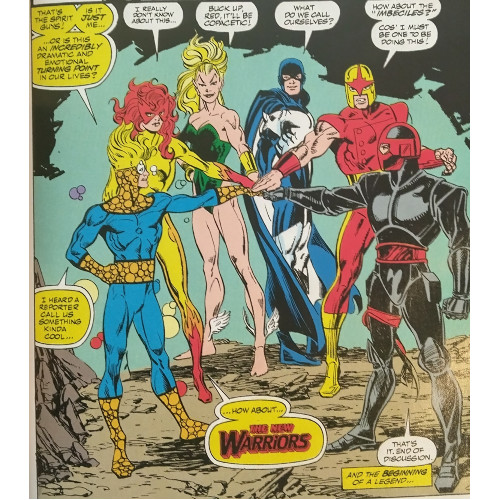
Teenagers, amiright?
Give a punk kid some flashy powers, a cool name, and a sparkly costume, and they suddenly think they can take on the world. Not yet fully developed to hold a steady perspective of life and all its irregularities, they use their powers selfishly, seeking fame and fortune, making mistakes which cause others their lives. Or they beat their chests and rage at an unjust world, thinking they can be the ones to make a change. They think they're invincible. Heck, if you're Mark Grayson, you call yourself Invincible!
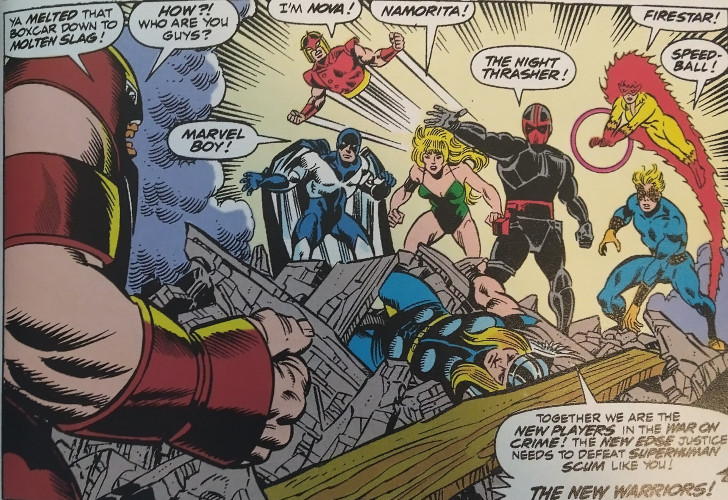
That young, unseasoned perspective–what writer Fabian Nicieza calls in the introduction to this volume, "the eternal optimism and arrogance of youth"–is what fuels the heart of this team. You can kinda, sorta see it in a group like Stan Lee and Jack Kirby's X-Men, better showcased in Roy Thomas' run on the team. You see it in Spidey's first foray into a costumed lifestyle. And you see it here. These New Warriors are perhaps a bit more experienced than the average teenage superhero–as I said, several of them, including Nova and Namorita, had been around a while before joining the team–but they're still in that awkward developmental phase as adolescents. They still attend school, they're responsible to their parents, they grasp at that hero/human balance sought after by other heroes like Spider-Man for decades.
There's a shift in this volume between the Thor issues written by Tom DeFalco which introduce the team and the first New Warriors issues handled by Nicieza. You see, fairly quickly, a different focus from each writer emerging in how they view the team. DeFalco, writing during the overarching "Acts of Vengeance" crossover, teams the New Warriors with Thor against the Juggernaut. Juggernaut's a villain with pedigree, who nearly trashed the X-Men in his very first appearance and, famously, fought Spider-Man to basically a standstill. You want a fresh team of heroes to stand out from the crowd, throw them against a guy like this.
Therein lies the difference between DeFalco and Nicieza.
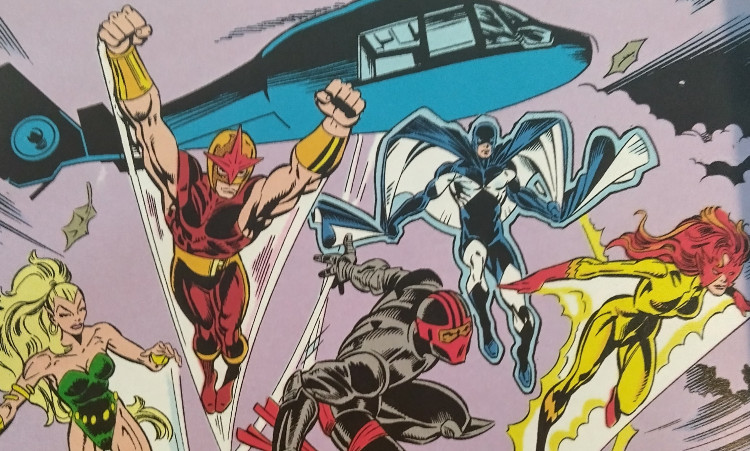
Under DeFalco, the team is proud, bordering on boastful, making claims you have no idea whether they can maintain. Much of this stems from team leader Night Thrasher, who tells Juggernaut they're "the new edge justice needs" with their "take no prisoners" approach to crimefighting. The other Warriors are a little more level-headed (if the girl with microwave powers tells you to cool down, you know you're a bit of a hot-head), but DeFalco has them come in charging, helping Thor defeat the Juggernaut and securing their reputations. DeFalco does treat Night Thrasher a little over the top in other places, allowing his teammates to serve as a voice of reason, but he's cemented on the idea of the team needing to do something big to make a name for themselves.
Under Nicieza, we get a different voice. Some of the arrogance is there, but unlike with DeFalco, it's tempered. Nicieza isn't looking for these kids to make a big splash and convince the adults they're just as cool as the grown-up superheroes. If there is a comparison, it's that Nicieza realizes the Warriors can fight the kinds of crime the Avengers aren't taking seriously. Street level crime, corporate manipulation, illegal genetic testing. The New Warriors represent a new generation, a new voice, a group who can embody the concerns of a younger populace heading into the 90s. Yeah, they still fight supervillains, but they fight supervillains created by corrupt companies looking to advance their genetic experiments and technology. Yeah, they battle terrorists, but they're terrorists who may also be activists who maaay just have a point despite their questionable methods.
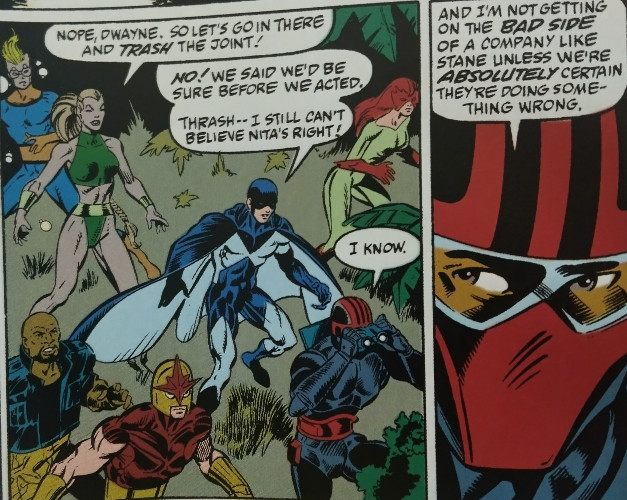
Nicieza writes an arc late in the volume featuring a villain named Star Thief (who has no relation to the character of the same name created by Jim Starlin), allowing readers to wrestle with the arc. The Warriors juggle the morals of their mission as well–they abhor Star Thief's actions (which involve destruction and death), but they cannot stand at the side of the agency Star Thief is trying to stop. Star Thief may be causing unnecessary damage, but he's doing so to keep a different entity from causing unnecessary damage. What's a team of socially conscious teenage superheroes to do? Nicieza offers a solution for the plot, but interestingly, he doesn't use the issues as a polemic against environmental terrorism or unsustainable practices, at least not verbally. We can grasp the larger lesson without being told directly what the larger lesson is. Where DeFalco's methods are brusque and in-your-face, Nicieza takes a more lenient approach that more evenly considers all the angles.
I've noted elsewhere I appreciate writers who let their stories do the talking, and Nicieza capably allows for our heroes to embody different viewpoints as they tackle these threats. Not every New Warrior agrees with each other all the time. They're allowed to question each other, to question the threats they tackle and how they tackle those threats. Such storytelling places us in a position where we, too, are allowed to ask questions rather than be driven by a bull-headed writer who sacrifices complexity to make a point. When Namorita insists that a company is performing illegal activities in the Star Thief "saga," her teammates provide counterarguments; at times, in stories such as this one, a character offering a counterpoint feels like a lazy attempt by a writer to make sure they include all the necessary viewpoints when, in reality, they're standing behind their own perspective from the start–they were right the whole time, there’s no real argument happening, and including any oppositional perspective was just a courtesy. Nicieza, wisely, avoids this trap: he creates uncertainty in the reader. You do begin questioning whether Namorita is correct, or whether her teammates' arguments are enough to sway your opinion towards a different direction.
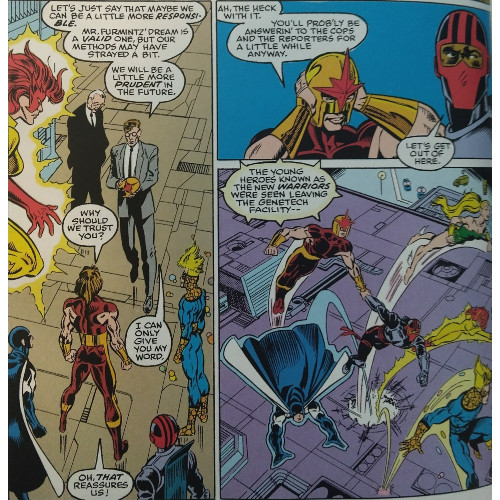
Though Nicieza handles the social commentary aspect fairly well, so much time spent infusing his narratives with rhetoric leaves us with some shallow protagonists. You can tell Nicieza isn't quite comfortable juggling a book with six central characters: during team sequences, several engaging dynamics do emerge, including some conflicting personalities and the smallest hints of romantic attraction between teammates (because when doesn't that happen in a book about teenage superheroes?), but individual characters are given short shrift. At least twice, Nicieza creates sequences which involve each character separately, and though these allow for some insight into where our young heroes are at (focusing on, for example, Speedball's parents pending divorce, Namorita's collegiate career, and Marvel Boy's struggle with an abusive father), they feel diminutive when compared to the book's scope. Nicieza wants his characters to feel real, you can tell. He just doesn't have enough length to adequately allow them to grow. Of course, I may be expecting too much from the first six issues of a longer series.
Part of this lack of characterization may also be because several New Warrior members were already established heroes, which may also explain why, between DeFalco and Nicieza, Night Thrasher receives the lion's share of this volume's character development. He's new, mysterious. We get hints at a Batman-esque backstory, including the inheritance necessary to fund a fledgling superhero team. He's got Alfred-like caretakers, he's friends with an enigmatic young woman, he straddles the line between hero and vigilante. He's got some pent up rage and an eye towards injustices he wishes to see rectified. Thrash (as his friends call him) is surprisingly fleshed out for a brand new character, and though there are clear parallels between him and DC's Dark Knight Detective, he's also unique enough to stand on his own.
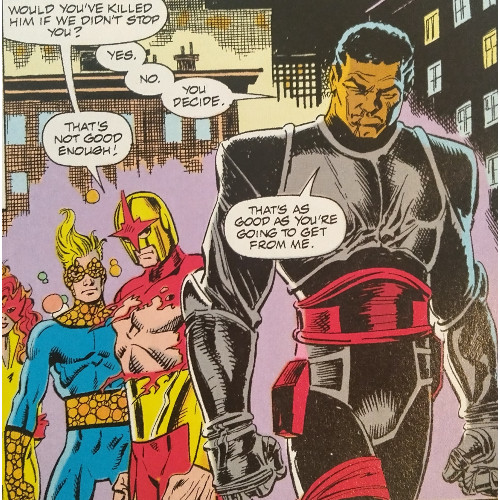
Save for the Thor issues illustrated by Ron Frenz, Mark Bagley ushers us into the Warriors fold on the art side of things. I've always been a Bagley fan, and the style which propelled over 100 issues of Ultimate Spider-Man can be seen in action here. His work here lacks, perhaps, some of the more detailed stylings seen in his 90s Spidey work, particularly during "The Clone Saga," but that may also be a result of different inkers and colorists. He hews close to the classic designs of several established characters, but when it comes to new characters, such as Genetech's Psionex, you can tell he enjoyed crafting original designs. Each member of Psionex is uniquely crafted, from a dude who looks like a grungier John Constantine to a guy largely composed of billowing shadows. As a longtime fan, I just enjoy noticing the trappings of Bagley's style–the way he does eyes and other facial features–and feel I can relax with the familiarity of a talented artist whose works on 90s Spidey comics is also notable.
The New Warriors get off to a surprisingly decent start with this volume. In an age where it so often seemed like comics traded subtlety for in-your-face imagery–remember, we've just entered the decade known for its over-the-top violence and increasingly dark narratives and heroes–Nicieza treads the line carefully. Maybe that overblown style wasn't yet cemented when the New Warriors debuted (we're still a few months away, at this point, from Todd McFarlane's first Spider-Man issue and a few years away from the debut of Spawn and other Image Comics characters), but even on the cusp of darker shifts in storytelling trends, Nicieza hews to what works: good narratives and a well-woven message which makes solid points while not feeling preachy. Some of our Warriors feel a little confined as a result, deeper characterization traded in for some larger plots, but as I read some other volumes I have, I may find those issues resolve themselves the deeper I dive into New Warriors lore.